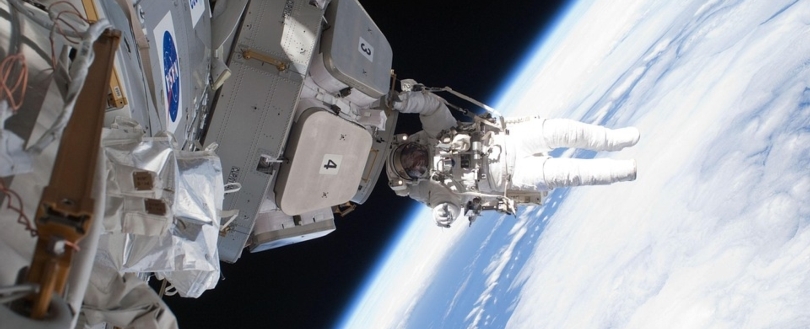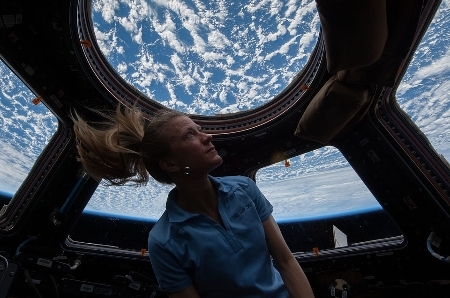- Homepage
- News
- Blogs & Articles
- NASA, Fires, and Industry Innovation

NASA, Fires, and Industry Innovation
Like it? Share it!
17 June 2016 by FIA Team, FIA Team
This week, NASA set up a series of experiments to explore how fire reacts in outer space. I do wonder how on earth fire manages to burn in a place where no oxygen exists (a vital ingredient in creating a fire, as you probably well know). Apparently, the fires were contained inside the spaceship, and they were trying to find out how fire reacts with zero gravity.

A female astronaut stares out the window at planet Earth
Which got me to thinking. What does NASA do to prevent fires in space? It is already tremendously dangerous for humans to go into space as it is (imagine how lonely it must be up there, knowing that if you need to spacewalk to fix the ship, you could just end up drifting away indefinitely…). Then imagine that the only place you are actually safe (the shuttle or craft you are travelling in) suddenly catches fire. It’s not like a house or an office block where you just go to the nearest exit and head outside to safety. In space, arguably ‘outside’ is just as dangerous as inside when there is a fire. ‘Outside’ is a place you’d want to avoid rather than evacuate to.
I got curious, so I searched the Guiness World Records to find out about fires in space. The first ever fire on a space station was on 23rd February 1997, caused by lithium perchlorate ‘candles’ which supplied oxygen to the station. Ah. So that’s where the oxygen in space comes from in order to create fire. Of course a space station would need a massive supply of oxygen in order to support the crew onboard – but it is also a big fire risk. In this instance, the astronauts about the Russian space station Mir almost had to abandon the station in their Soyuz ‘lifeboat’, but thankfully the fire was extinguished.
How terrifying?!
You certainly can’t call 999 and expect the Fire and Rescue Services to come and save you in a situation like that, so goodness only knows how they managed it. Imagine all the skills you need in order to survive in space…
Not only that, but previous experiments by NASA have uncovered that fire doesn’t behave as we know it here on Earth. For starters, fire in space can start at lower temperatures and flare up in less oxygen than here on Earth. And even more strangely, in a so-far unexplained phenomenon, droplets of methanol continue to burn, even after all flames have been extinguished…

Space is an amazing but dangerous place...
Weird, right? But by doing experiments like these we can learn more about how fires behave in space and engineer safer environments for astronauts in space, who are constantly conducting vital experiments to find out more about how things behave in zero gravity – including the human body. So far, we don’t know if people can survive in space long-term or the impacts of prolonged zero gravity on a person, but what we can say is that this latest fire experiment by NASA will get us one step closer to understanding how a fire behaves in space.
At the time of writing, NASA says the experiment was ‘successful’, but hasn’t yet given us any further updates on what they have discovered about how fires begin or spread in space.
All I can imagine, though, is the amount of paper required to carry out a suitable and sufficient fire risk assessment for such a grandiosely dangerous experiment. I can’t even really imagine what fire detection and alarm systems they must use on space craft, or how they might go about suppressing the fire, since water is certainly not an option – not least because the zero gravity would mean that the droplets would just float and drift in the nothingness of space, but also because water is such a precious and vital commodity in space, simply because there is none.

You never know who might have
the brightest ideas
The point is, space travel for tourists is a very probable and likely part of our future (the first short flights for tourists are now being advertised on one website – offering thrill-seekers one 6 minute flight (almost) out of the Earth’s atmosphere and back down again, whilst airline giant Virgin are busy developing Virgin Galactic, the world’s first ‘spaceline’ that will take passengers on a flight that will orbit the Earth). And we as an industry need to be ready.
Science is developing. Science is moving fast. We are learning more, and discovering things way beyond the scope of what we currently know and understand about how fires work and how to suppress them. And even though we are all down here and science up in space is rapidly advancing, perhaps we should be looking at ways that we can advance the technology we have now in the fire industry, here on Earth.
Are there better ways of detecting fires? Are there other ways of suppressing fires that we haven’t thought of or considered yet? Maybe, just maybe, someone out there has a genius idea that cinches flames almost immediately they just haven’t expressed yet.
Hear that? That’s the sound of innovation calling.
-

FIA Team
FIA Team
Related posts
-
Gateways 2 and 3 - What will be the impact on fire safety engineers?
08 January 2024
By Jon Pagan, Head of Technical at Kiwa Fire Safety Compliance & FIA Fire Engineering Council Chair
-
Ensuring fire safety in schools: responsibilities, developments, and training
06 October 2023
By Neil Budd, FIA Technical manager
-
On this day, forgotten disasters: Summerland disaster
02 August 2023
By Kirsty Lavell, Marketing Manager
Related news
-
Serviced Apartments: An Emerging Fire Safety Risk
17 December 2025
-
Business Owner Fined for Breaching Fire Safety Legislation
06 October 2025
